The Disc Replacement ( Cervical /Lumber) Cost in South Africa approximately starts from USD 10000
Disk replacement surgery involves changing a problematic disc between two small bones in the spine (lumbar or cervical) with an artificial disk. The surgery begins by making an incision in the abdominal area so as to not disturb the nerves at the time of accessing the spine. The orthopaedic spine surgeon is aided by the vascular surgeon to open the disc space. The disk that is creating the issue is replaced with an artificial disk implant. Disk Replacement has a 60-74% success rate. It provides partial or near complete mobility in the cervical/lumbar region of the spine.
The hospitals and clinics in South Africa give a personal touch to the treatment they provide to their patients. They are able to achieve this because they have the best of surgeons and other medical professionals who ensure excellent medical and surgical services. The hospitals are also equipped with newly upgraded cutting edge technological instruments. Some of these medical centres are listed below: Netcare Group, Johannesburg Life Healthcare Hospital Group, Johannesburg Nelson Mandela Academic Hospital, Mthatha Life Kingsbury Hospital, Cape Town Medi Clinic Cape Town Ahmed Kathrada Private Hospital, Lenasia Life Kingsbury Hospital, Cape Town
Disk replacement cost in South Africa starts from U$ 10,000 and can go up to US$ 40,000 which is much lesser than the Disk Replacement cost in United States of America i.e., US$ 55,000 to US$ 58,000.
Treatment cost
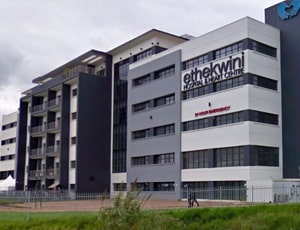
Apart from in-detail treatment procedures available, Lenmed Ethekwini Hospital and Heart Centre located in Durban, South Africa has a wide variety of facilities available for International Patients. Some of the facilities which are provided by them are Accommodation, Airport Transfer, Choice of Meals, Interpreter, SIM, TV inside room. Also listed below are some of the most prominent infrastructural details:
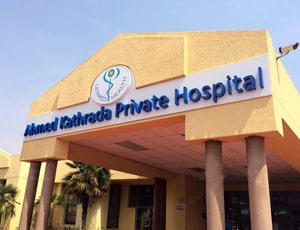
Apart from in-detail treatment procedures available, Lenmed Ahmed Kathrada Private Hospital located in Johannesburg, South Africa has a wide variety of facilities available for International Patients. Some of the facilities which are provided by them are Accommodation, Airport Transfer, Choice of Meals, Interpreter, SIM, TV inside room. Also listed below are some of the most prominent infrastructural details:
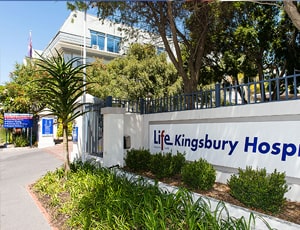
Apart from in-detail treatment procedures available, Life Kingsbury Hospital located in Cape Town, South Africa has a wide variety of facilities available for International Patients. Some of the facilities which are provided by them are Accommodation, Airport Transfer, Choice of Meals, Interpreter, SIM, TV inside room. Also listed below are some of the most prominent infrastructural details:

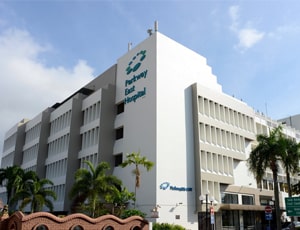
Parkway East Hospital located in Joo Chiat Pl, Singapore is accredited by JCI. Also listed below are some of the most prominent infrastructural details:
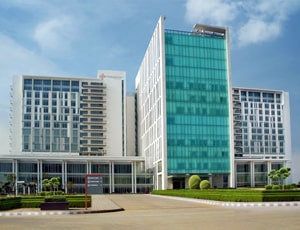
Types of Disc Replacement ( Cervical /Lumber) in Medanta - The Medicity and its associated cost
| Treatment Option | Approximate Cost Range (USD) | Approximate Cost Range (INR) |
|---|---|---|
| Disc Replacement (Overall) | 7319 - 11278 | 590702 - 909722 |
| Cervical Disc Replacement | 5619 - 9011 | 466179 - 725991 |
| Lumbar Disc Replacement | 7254 - 11188 | 595462 - 903995 |
DOCTORS IN 14 SPECIALITIES
FACILITIES & AMENITIES
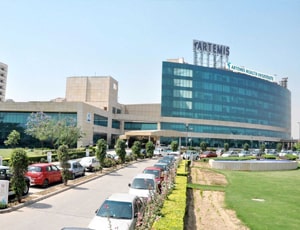
Types of Disc Replacement ( Cervical /Lumber) in Artemis Health Institute and its associated cost
| Treatment Option | Approximate Cost Range (USD) | Approximate Cost Range (INR) |
|---|---|---|
| Disc Replacement (Overall) | 7399 - 11375 | 612623 - 909882 |
| Cervical Disc Replacement | 5742 - 8961 | 461578 - 753982 |
| Lumbar Disc Replacement | 7421 - 11043 | 605492 - 913610 |
DOCTORS IN 15 SPECIALITIES
FACILITIES & AMENITIES
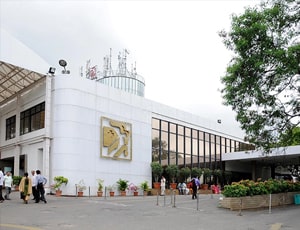
Types of Disc Replacement ( Cervical /Lumber) in Apollo Hospitals and its associated cost
| Treatment Option | Approximate Cost Range (USD) | Approximate Cost Range (INR) |
|---|---|---|
| Disc Replacement (Overall) | 7449 - 11074 | 599782 - 926564 |
| Cervical Disc Replacement | 5537 - 9166 | 465450 - 728201 |
| Lumbar Disc Replacement | 7294 - 11069 | 611745 - 915634 |
DOCTORS IN 14 SPECIALITIES
FACILITIES & AMENITIES
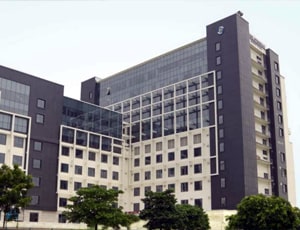
Types of Disc Replacement ( Cervical /Lumber) in Venkateshwar Hospital and its associated cost
| Treatment Option | Approximate Cost Range (USD) | Approximate Cost Range (INR) |
|---|---|---|
| Disc Replacement (Overall) | 6602 - 10150 | 542577 - 835738 |
| Cervical Disc Replacement | 5089 - 8142 | 415740 - 667554 |
| Lumbar Disc Replacement | 6567 - 10164 | 540841 - 830930 |
DOCTORS IN 13 SPECIALITIES
FACILITIES & AMENITIES
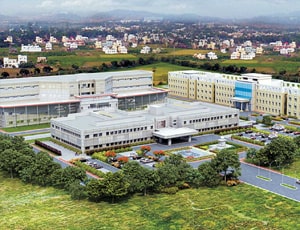
Types of Disc Replacement ( Cervical /Lumber) in Global Health City and its associated cost
| Treatment Option | Approximate Cost Range (USD) | Approximate Cost Range (INR) |
|---|---|---|
| Disc Replacement (Overall) | 7161 - 11095 | 587041 - 910000 |
| Cervical Disc Replacement | 5678 - 8953 | 461448 - 740950 |
| Lumbar Disc Replacement | 7180 - 11035 | 606649 - 914917 |
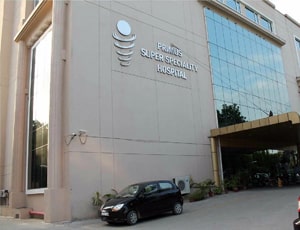
Types of Disc Replacement ( Cervical /Lumber) in Primus Super Speciality Hospital and its associated cost
| Treatment Option | Approximate Cost Range (USD) | Approximate Cost Range (INR) |
|---|---|---|
| Disc Replacement (Overall) | 6611 - 10169 | 540712 - 832194 |
| Cervical Disc Replacement | 5070 - 8101 | 417632 - 667020 |
| Lumbar Disc Replacement | 6619 - 10182 | 541258 - 834160 |
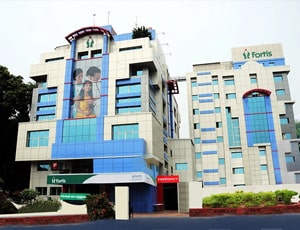
Types of Disc Replacement ( Cervical /Lumber) in Fortis Malar Hospital and its associated cost
| Treatment Option | Approximate Cost Range (USD) | Approximate Cost Range (INR) |
|---|---|---|
| Disc Replacement (Overall) | 6612 - 10196 | 543125 - 833321 |
| Cervical Disc Replacement | 5094 - 8121 | 416178 - 664491 |
| Lumbar Disc Replacement | 6612 - 10170 | 540562 - 831413 |
DOCTORS IN 9 SPECIALITIES
FACILITIES & AMENITIES
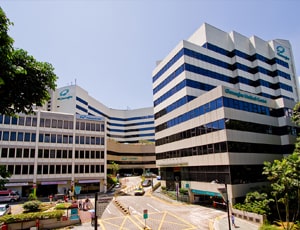
Gleneagles Hospital located in Napier Road, Singapore is accredited by JCI. Also listed below are some of the most prominent infrastructural details:
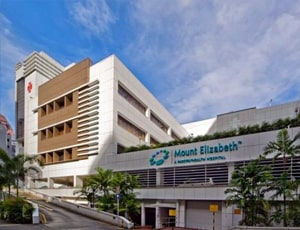
Mount Elizabeth Hospital located in Singapore, Singapore is accredited by JCI. Also listed below are some of the most prominent infrastructural details:
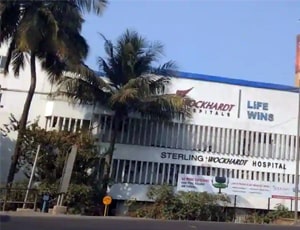
Types of Disc Replacement ( Cervical /Lumber) in Sterling Wockhardt Hospital and its associated cost
| Treatment Option | Approximate Cost Range (USD) | Approximate Cost Range (INR) |
|---|---|---|
| Disc Replacement (Overall) | 6572 - 10164 | 540480 - 835827 |
| Cervical Disc Replacement | 5091 - 8107 | 416066 - 668117 |
| Lumbar Disc Replacement | 6614 - 10192 | 540996 - 831626 |
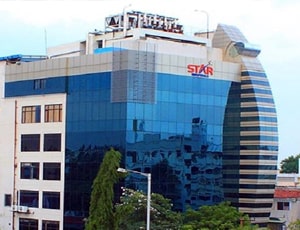
Types of Disc Replacement ( Cervical /Lumber) in Star Hospitals and its associated cost
| Treatment Option | Approximate Cost Range (USD) | Approximate Cost Range (INR) |
|---|---|---|
| Disc Replacement (Overall) | 6003 - 9483 | 497687 - 772449 |
| Cervical Disc Replacement | 4613 - 7522 | 383868 - 604639 |
| Lumbar Disc Replacement | 5999 - 9447 | 504042 - 770688 |
Disc replacement surgery involves removing the damaged disc tissue and implanting an artificial disc. This procedure can be performed in the cervical (neck) and lumbar (lower back) regions. The artificial disc maintains the spine's natural motion while securely attaching to the surrounding vertebral bones.
Although total disc replacement is a newer procedure and is performed less frequently than traditional spinal decompression and fusion surgeries, it is becoming increasingly popular. This is due to its ability to preserve spinal motion while effectively treating neck or back pain. Additionally, as more long-term outcome studies demonstrate its effectiveness, the procedure continues to gain acceptance.
The following are the conditions that lead to the need for a disc replacement surgery:
The best candidates for spinal disc replacement surgery are patients with diseased discs in the cervical or lumbar spine who still have good spinal motion and minimal or no arthritis. One of the primary goals of this surgery is to preserve spinal motion. According to research from HSS, patients with greater disc height may be better suited for this procedure than those with less disc height.
Cervical Disc Replacement: During cervical disc replacement, a small incision is made at the front of the neck. The soft tissues, including the esophagus, trachea, and blood vessels, are carefully protected and gently moved aside to access the spine. Once the correct spinal level is identified, the damaged disc is removed. The adjacent bones are then prepared to receive the artificial disc implant, which is securely positioned. The placement is confirmed with an X-ray.
Lumbar Disc Replacement: For lumbar disc replacement, the surgery may involve the assistance of a vascular or abdominal surgeon. An incision is made low on the front of the abdomen. The vital organs, blood vessels, and nerves are carefully protected and moved aside to expose the spine. After confirming the correct spinal level, the diseased disc is removed. The bones above and below are prepared for the implant, which is then securely positioned. Placement is confirmed with an x-ray.
Patients can generally expect to spend at least one night in the hospital after disc replacement surgery and may be discharged after two to four days, after a thorough evaluation by the physical therapists. the patient should avoid bending or twisting for the first two to four weeks to avoid straining the surgical site. Patients are advised to use braces if their condition requires support in the lower back.
The patient may recover and get back to normal activities within three weeks after disc replacement surgery. Studies reveal that patients who successfully undergo total disc replacement surgery remain asymptomatic and free from chronic back pain for an average of 8.7 years.
The recovery time after total disc replacement is significantly less than that of spinal fusion surgery. The mobility is not compromised, and the prognosis is good. The success rate of the disc replacement surgery is around 98 percent. Rigorous or high-impact activity is restricted until the surgical site is well healed, usually just a few weeks. Some patients may benefit from a short course of physical therapy afterward. In general, patients can expect to return to normal activities three months post-surgery.
Ask your healthcare adviser for the best multiple options and choose the one that meets your expectations
Disc Replacement ( Cervical /Lumber) cost in South Africa starts from about $10000. There many COHSASA certified hospitals in South Africa that offer Disc Replacement ( Cervical /Lumber)
Disc Replacement ( Cervical /Lumber) cost in South Africa varies from one hospital to the other. Some of the best hospitals for Disc Replacement ( Cervical /Lumber) offer a comprehensive package that covers the end-to-end expenses related to investigations and treatment of the patient. The Disc Replacement ( Cervical /Lumber) procedure in South Africa includes the fees of the surgeon, hospitalization and anesthesia as well. A prolonged hospital stay due to delayed recovery, new diagnosis and complications after surgery may increase the cost of Disc Replacement ( Cervical /Lumber) in South Africa.
There are many hospitals across the country that offer Disc Replacement ( Cervical /Lumber) to international patients. The following are some of the most renowned hospitals for Disc Replacement ( Cervical /Lumber) in South Africa:
After Disc Replacement ( Cervical /Lumber) in South Africa, the patient is supposed to stay in guest house for another 21 days. During this time, the patient undergoes medical tests and consultations. this is to ensure that the treatment was successful and the patient us safe to return.
Apart from the Disc Replacement ( Cervical /Lumber) cost, there are a few other daily charges that the patient may have to pay. These are the charges for daily meals and accommodation outside the hospital. The extra charges may start from USD 50 per person.
There are many cities that offer Disc Replacement ( Cervical /Lumber) in South Africa, including the following:
After the Disc Replacement ( Cervical /Lumber) takes place, the average duration of stay at the hospital is about 3 days. During the recovery, the patient is carefully monitored and control tests are performed to see that everything is okay. If required, physiotherapy sessions are also planned during recovery in hospital.
The average rating for Disc Replacement ( Cervical /Lumber) hospitals in South Africa is 2.9. Several parameters such as hospital infrastructure, pricing policy, quality of services, politeness of staff etc. contribute to the rating.
There are more than 3 hospitals that offer Disc Replacement ( Cervical /Lumber) in South Africa. The above mentioned hospitals have the required infrastructure and a dedicated unit where patients can be treated. Additionally, these hospitals are known to comply with the international standards as well as local legal requirements for the treatment of patients.
Some of the top doctors for Disc Replacement ( Cervical /Lumber) in South Africa are: